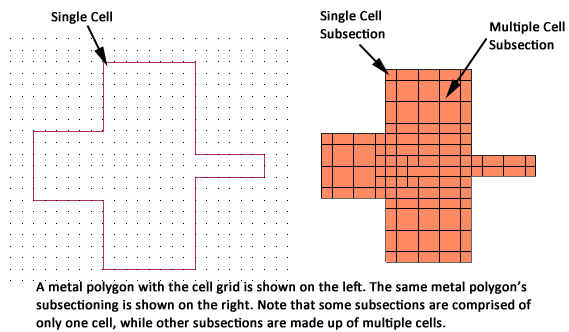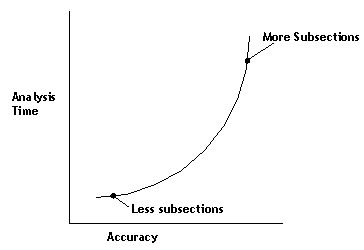The Sonnet subsectioning is based on a uniform grid indicated by the small dots in the project editor window. The small dots are placed at the corners of a “cell”. One or more cells are automatically combined together to create subsections. Cells may be square or rectangular (any aspect ratio), but must be the same over your entire circuit.

If you are using Sonnet to edit your circuit, the cell size is specified in the Box page of the Circuit Settings dialog box, which is opened in the Edit tab by selecting Circuit - Settings from the project editor main menu. Since multiple cells are combined together into a single subsection, the number of subsections is usually considerably smaller than the number of cells. This is important because the analysis solves an N x N matrix where N is the number of subsections. A small reduction in the value of N results in a large reduction in analysis time and memory. All EM simulators have an inherent trade off between speed and accuracy. Decreasing the subsection size typically increases the accuracy but also causes an increase in analysis time. The figure below shows the typical trade off between analysis time and accuracy.

Em automatically places small subsections in critical areas where current density is changing rapidly, but allows larger subsections in less critical areas, where current density is smooth or changing slowly. However, in some cases you may wish to modify the automatic algorithm because you want a faster, less accurate solution, or a slower, more accurate solution, than is provided by the automatic algorithm.
This chapter explains how em combines cells into subsections and how you can control this process to obtain an analysis time or the level of accuracy you require. There is also a discussion of selecting the cell size and how that may affect the em analysis.
 For a discussion of efficient subsectioning practices with application examples, please refer to "Efficient Sonnet Meshing".
For a discussion of efficient subsectioning practices with application examples, please refer to "Efficient Sonnet Meshing".